LED light therapy makes your skin age in reverse by penetrating deep into your cells and triggering multiple rejuvenating processes. When specific wavelengths of red and near-infrared light reach your skin cells, they boost ATP production in the mitochondria, energizing cells for repair and renewal. This enhanced cellular energy activates fibroblasts to produce more collagen and elastin, while simultaneously reducing inflammation and oxidative stress. You'll notice improved skin texture, reduced wrinkles, and more even tone as the light therapy accelerates cell turnover and stimulates your skin's natural healing mechanisms. Discover how this NASA-developed technology can transform your skincare routine.
The Science Behind LED Therapy
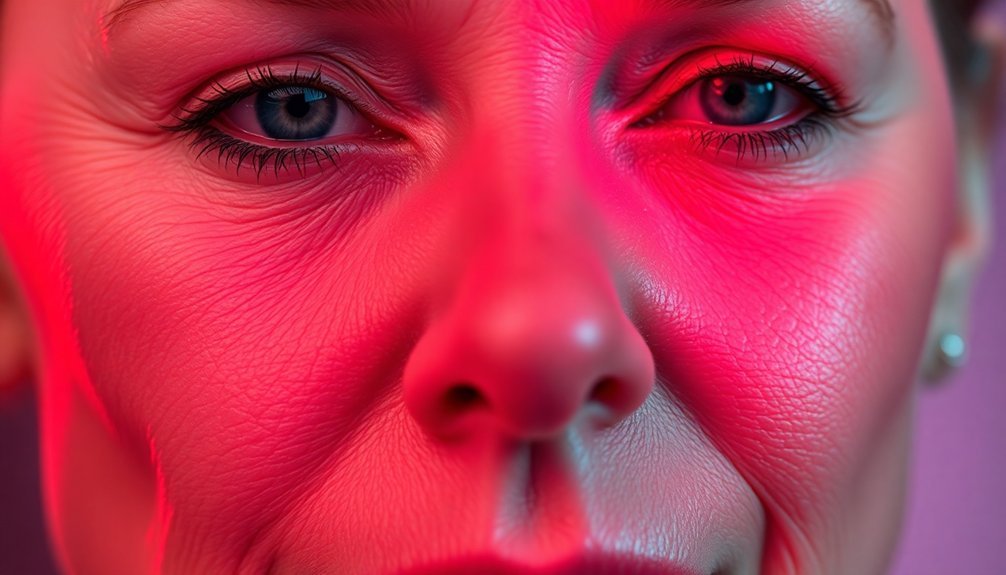
A beam of targeted light penetrates your skin, setting off a cascade of cellular reactions that form the foundation of LED therapy. When specific wavelengths reach different skin depths, they trigger your cells to respond in unique ways. Red light, for instance, stimulates your fibroblast cells to produce more collagen, while blue light targets and destroys acne-causing bacteria.
Your skin's aging process can actually reverse through this technology because LED therapy works at a cellular level. When red and near-infrared wavelengths reach deeper skin layers, they boost your cellular energy production and promote faster cell turnover. Originally developed by NASA for astronauts, this technology has evolved into a powerful tool for skin rejuvenation.
This process doesn't just mask aging signs – it actively works to rebuild your skin's supportive structure.
Research backs these claims with compelling evidence. Studies from 2014 and 2018 have documented significant improvements in skin elasticity, firmness, and wrinkle reduction after LED treatments.
You'll find this therapy particularly effective because it's non-invasive and works for all skin types. Whether you're using professional equipment or at-home devices like LED masks, the fundamental process remains the same: targeted light energy stimulates your skin's natural healing and regenerative processes.
Cellular Response To Red Light
When your skin cells absorb red light, they ramp up ATP production in the mitochondria, giving your cells the energy boost needed for rejuvenation and repair.
Your enhanced mitochondrial function sets off a chain reaction that accelerates cellular recovery and promotes tissue healing. The therapy activates transcription factors NFκB, leading to improved cell survival and regeneration.
The increased cellular energy directly stimulates collagen synthesis, which helps rebuild and strengthen your skin's structural framework while speeding up the repair of damaged tissue.
ATP Production Drives Rejuvenation
Red light therapy's remarkable skin rejuvenation effects stem directly from its ability to boost ATP production in cells. When red light penetrates your skin, it triggers a cascade of cellular responses that accelerate your natural healing processes.
The light wavelengths between 600-700 nm specifically target your cells' mitochondria, increasing their energy production capacity and enhancing cellular metabolism. The therapy is completely pain-free and comfortable during treatments.
This boost in ATP production powers several key rejuvenation mechanisms in your skin. Your fibroblasts become more active, producing higher levels of collagen and elastin that improve your skin's structure and elasticity. Your keratinocytes respond by increasing their respiration rate and multiplication, while enhanced DNA repair processes help protect your cells from damage.
You'll notice these effects through improved skin barrier function and accelerated wound healing. The increased ATP production energizes your cells to synthesize more hyaluronic acid, which helps maintain skin hydration and plumpness.
This cellular energization doesn't just affect surface-level improvements – it drives deep, lasting changes in your skin's health by supporting fundamental biological processes that combat aging signs and promote tissue regeneration.
Mitochondrial Function Enhances Recovery
Inside your cells, a remarkable transformation occurs during light therapy as mitochondrial function kicks into high gear. When red light penetrates your skin, it directly interacts with cytochrome C oxidase (CCO), a vital protein in your cellular powerhouses. This interaction sparks enhanced ATP production by optimizing the electron transport chain and breaking down harmful nitric oxide that can interfere with energy production.
Your skin cells respond to this mitochondrial boost with increased metabolic activity and improved cellular respiration. As these cellular powerhouses work more efficiently, they generate higher levels of ATP – your cells' energy currency. This surge in energy production drives the activation of fibroblasts, which then ramp up their production of essential proteins like collagen and elastin. The daily recycling of ATP molecules in this process equals your body weight, highlighting its crucial role in cellular regeneration.
This enhanced mitochondrial function doesn't just stop at energy production. It triggers a cascade of cellular signaling pathways that promote skin recovery and rejuvenation. The process is particularly effective because red light wavelengths (600-1000 nm) can penetrate deeply into your skin tissues, ensuring that cells at various depths receive this rejuvenating boost in mitochondrial activity.
Collagen Synthesis Accelerates Repair
The remarkable process of collagen synthesis begins as your skin cells respond to therapeutic red light wavelengths. When you expose your skin to specific red and near-infrared wavelengths, they penetrate deeply into your tissue, where they activate your fibroblast cells – the key players in collagen production.
Your cells absorb these light photons, triggering a cascade of biological responses that accelerate repair.
You'll notice enhanced healing as the red light therapy stimulates your cellular repair mechanisms and boosts blood circulation. The increased blood flow delivers more oxygen and nutrients to your skin's tissues, while the activated fibroblasts ramp up their production of collagen and elastin.
Your skin's natural healing processes accelerate as the therapy modulates cytokine production and maintains immune system balance.
The therapy's ability to boost ATP production in your cells directly supports collagen synthesis, reducing the appearance of fine lines and wrinkles. As your fibroblasts respond to the light therapy, they generate new collagen fibers that strengthen and repair your skin's structure.
This non-invasive treatment improves your skin's texture and appearance through multiple sessions, effectively combating signs of aging.
Collagen Production Through LED Exposure
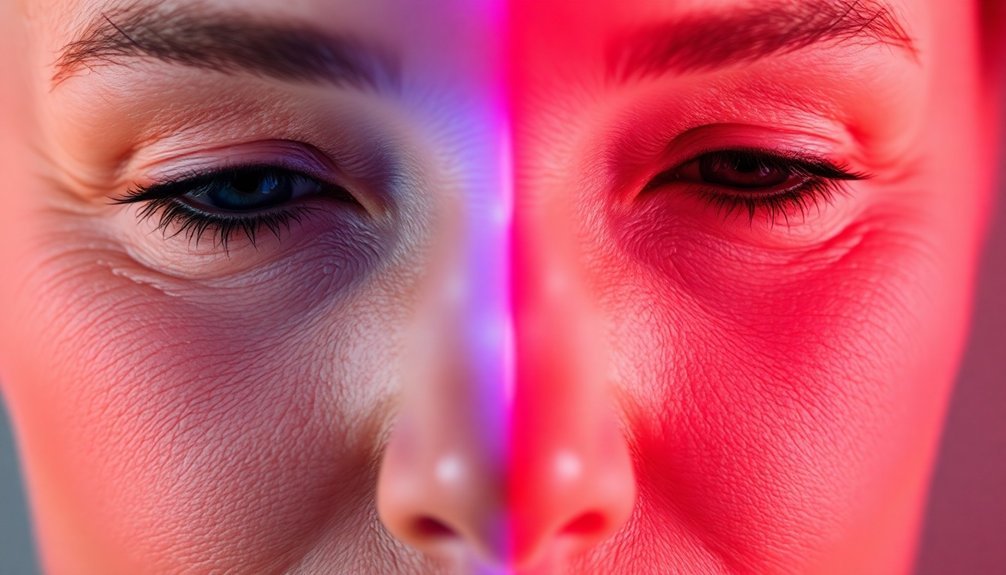
Your skin's collagen production gets a significant boost when exposed to LED light therapy, particularly red wavelengths that penetrate deep into the dermis.
The red light activates your skin's fibroblasts and mitochondria, triggering increased collagen synthesis while simultaneously reducing the breakdown of existing collagen through MMP inhibition.
These cellular responses work together to enhance your skin's natural collagen production, leading to improved firmness and elasticity over time.
Light Activates Skin Cells
Recent scientific advances have shown how LED light therapy activates skin cells through photobiomodulation, triggering a cascade of cellular responses that boost collagen production. When your skin absorbs red LED light (630-670 nm), it stimulates fibroblast cells, which are responsible for producing collagen, elastin, and hyaluronic acid – essential components for maintaining youthful, firm skin.
You'll notice improvements in skin texture as LED exposure enhances cell proliferation in both fibroblasts and keratinocytes. This activation leads to higher re-epithelialization rates and accelerated wound retraction.
The process doesn't just stop at surface-level changes; it's working deep within your cells, increasing mitochondrial ATP production and improving cellular signaling pathways.
What's particularly remarkable is how LED therapy reduces oxidative stress while improving your skin's antioxidant profile. This dual action helps protect your skin cells while they're busy regenerating.
The anti-inflammatory effects are significant too, as the light reduces pro-inflammatory cytokines like IL-6 and TNF-α. Best of all, these benefits aren't temporary – studies show the rejuvenating effects can last up to a month after you've completed your treatment sessions.
Wavelengths Boost Collagen Synthesis
Light wavelengths play a crucial role in stimulating collagen production within your skin cells. Red light therapy, operating at 630-700 nm, penetrates deeply into your skin to activate fibroblast growth factors, while near-infrared light (800-900 nm) enhances this effect even further. These specific wavelengths boost your body's natural collagen synthesis process and improve blood flow.
When you expose your skin to red LED light, you'll trigger increased ATP production, which directly supports collagen and elastin formation. Clinical studies using 630 ± 10 nm LED masks have shown significant improvements in skin quality after just three months of treatment.
| Wavelength Type | Benefits | Best For |
|---|---|---|
| Red (630-700nm) | Collagen boost, blood flow | Fine lines |
| Near-IR (800-900nm) | Deep penetration, regeneration | Deep wrinkles |
| Blue (415-450nm) | Bacteria reduction | Acne control |
You'll notice progressive improvements in your skin's firmness, texture, and overall appearance with regular LED therapy sessions. The treatment's non-invasive nature makes it ideal for consistent use, and the benefits continue even after you've completed your treatment series, leading to lasting structural improvements in your skin.
ATP Enhancement Drives Skin Rejuvenation
The powerhouse of cellular energy, ATP plays a fundamental role in skin rejuvenation and aging prevention. When you undergo LED therapy, particularly red light treatments, you're actually boosting your skin's ATP production through enhanced mitochondrial function.
This process directly fuels essential metabolic activities that keep your skin looking younger and healthier.
As you age, your skin's natural ATP levels decline, leading to reduced cellular energy and visible signs of aging. However, LED photobiomodulation can reverse this process by stimulating ATP production, which then:
- Powers the synthesis of collagen and elastin, improving skin firmness and reducing wrinkles
- Regulates your skin's water balance, maintaining ideal hydration levels and preventing moisture loss
- Energizes cell repair mechanisms, accelerating skin regeneration and healing
- Enhances the absorption of skincare products by increasing skin permeability
What's particularly exciting is that when ATP production increases through LED therapy, it creates a compound effect with other anti-aging ingredients in your skincare routine. The combination of red light photobiomodulation and ATP enhancement effectively reverses visible signs of aging while improving overall skin quality and texture.
Clinical Evidence For Skin Reversal
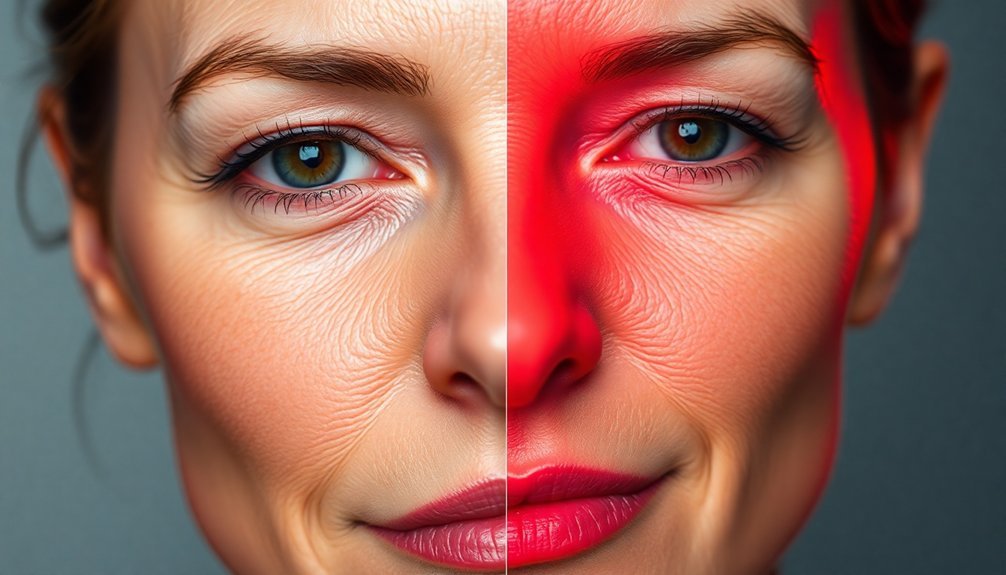
Scientific studies have consistently demonstrated LED therapy's remarkable effectiveness in reversing visible signs of aging. Clinical trials show that 90% of patients experience improved skin clarity, while 74% notice a visible reduction in fine lines and wrinkles. What's particularly compelling is that 100% of study participants showed increased collagen levels after treatment.
LED therapy's effectiveness stems from its ability to target multiple skin concerns simultaneously. Red light wavelengths work to diminish age spots and skin discoloration while reducing excess oil production from sebaceous glands. The therapy's impact on collagen and elastin production is especially significant, as these proteins are essential for maintaining firm, youthful skin.
What sets LED therapy apart is its proven safety record. Unlike aggressive treatments such as chemical peels or laser procedures, you won't experience burns or adverse reactions. It's gentle enough for all skin types and colors, yet powerful enough that even Navy SEALs use it for wound healing.
The therapy's non-invasive nature, combined with its lack of UV rays, makes it an ideal choice for regular, long-term use in your skincare routine.
Treatment Protocol For Best Results
Achieving best results with LED therapy requires following a structured treatment protocol tailored to your skin's needs. You'll need to commit to 8-12 sessions, scheduled 1-2 times per week, with each session lasting 10-20 minutes.
The improvements can appear within days, but you'll see more noticeable results after 2-4 weeks of consistent treatment.
To maximize your LED therapy benefits, follow these essential steps:
- Start with a thorough pre-treatment assessment to document your baseline skin condition and track future improvements.
- Choose the right wavelength combination – red light for collagen production and anti-aging, blue light for acne, or near-infrared for pain management.
- Maintain regular treatment intervals during the initial phase, then shift to maintenance sessions every 4-6 weeks.
- Combine LED therapy with complementary treatments like microdermabrasion or chemical peels for enhanced results.
Your dermatologist can adjust your treatment plan based on your skin's response and specific concerns. Remember, consistency is vital – skipping sessions can slow down your progress.
You'll also benefit from incorporating LED therapy into your regular skincare routine while following post-treatment evaluations to guarantee you're achieving the best results.
Frequently Asked Questions
Can LED Light Therapy Help With Acne Scars While Reversing Aging?
Yes, you'll see dual benefits with LED therapy. Red light stimulates collagen to fade your acne scars and reduce aging signs, while blue light fights acne-causing bacteria to prevent new breakouts.
How Does LED Therapy Interact With Skincare Products and Medications?
You'll need to avoid photosensitizing products like AHAs, BHAs, and retinoids when using LED therapy. Be cautious with certain antibiotics and medications, but you can enhance results by using beneficial serums and moisturizers.
Is At-Home LED Therapy as Effective as Professional Treatments?
While at-home LED therapy can be effective, you'll need longer treatment times to match professional results. In-clinic devices deliver higher energy levels, but your consistent use of at-home treatments can still achieve significant improvements.
Do Different Skin Tones Respond Differently to LED Light Therapy?
You'll find LED light therapy works effectively across all skin tones. While some wavelengths may be adjusted for darker skin, the core benefits like collagen production, healing, and rejuvenation remain consistent for everyone.
Can LED Therapy Cause Hyperpigmentation or Damage to Sensitive Eyes?
Yes, you'll need to be careful with LED therapy. It can trigger hyperpigmentation, especially with high intensities or blue light. For your eyes' safety, always use protective eyewear and avoid direct exposure.
In Summary
You've discovered that LED therapy effectively "reverses" skin aging by stimulating your cells' natural repair mechanisms. Through regular red light exposure, you're activating collagen production and boosting ATP energy levels in your skin cells. When you follow proper treatment protocols, you'll notice improved texture, reduced wrinkles, and enhanced skin firmness. While it won't completely turn back time, LED therapy offers a scientifically-proven way to rejuvenate your skin's appearance.
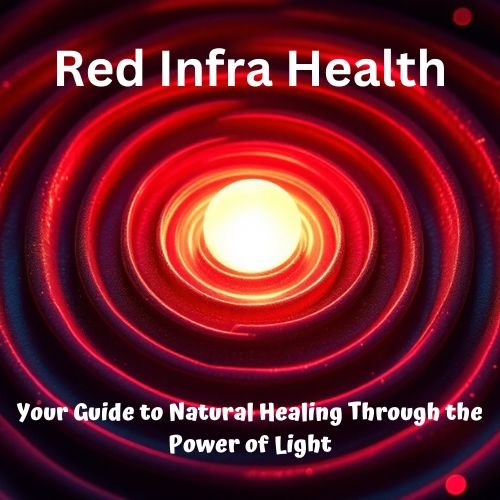


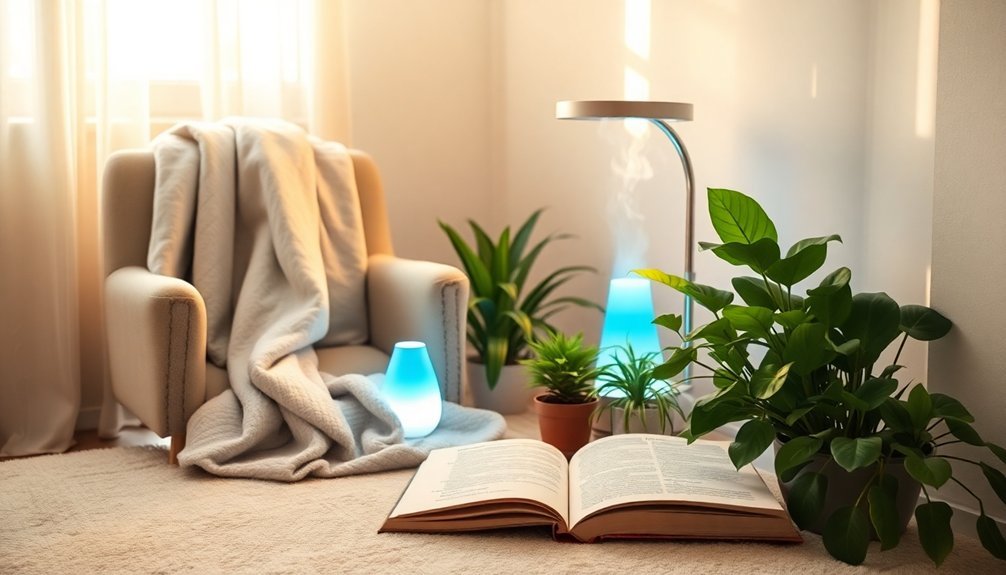

Leave a Reply